ICE driving is a thing car makers do when they want us to concentrate our opinions on everything except the way a car handles or even accelerates. The tyres usually sprout spikes or studs, rendering any analysis of the below-deck doings fairly pointless. The engines could wheeze out 30kW and find it more than adequate.
Usually, we’re limited to writing about engine noise, interior space and quality, whether or not anything fell off and how many dog-sled teams we found (one, incidentally).
Different this time, though. Volkswagen (VW) didn’t bother with studs, leaving its second-generation Tiguans, due in SA at the end of the third quarter of 2016, replete with a 235/50 R19 set of the wonderfully named ContiVikingContact winter tyres. They won’t exactly replicate the steering feel or the handling finesse of a set of standard boots, but they’re a lot closer than a set of metal porcupines.
VW officially says it has us in Arvidsjaur, Sweden to sample its new 4Motion Active Control system, which lets you scroll through snow, normal, off-road and properly off-road setups, but it goes deeper than that. The normal mode has a subset of options, from eco through to sport and customisable individual mode, so that takes the possibilities out to nine.
The company unofficially has us here because the Tiguan 2 is the first all-new model it has launched since the Dieselgate scandal spiralled so haughtily out of control and it would quite like to be known for making cars again. It will be the most important car the firm launches this year, even allowing for the bigger-selling Polo (as the Tiguan’s seven-seat derivative is at the core of VW’s latest attempt to make an impression in the US).
The new model shares almost nothing with the predecessor that sold 2.6-million models, but was caught in a no-man’s land in countries such as America. Its interior size left it too small for markets accustomed to bigger machinery at the price, but was too big to let VW squeeze in another model between the Tiguan and the Touareg.
That’s changed. Completely. It’s a far bigger car inside and out, with another 60mm of wheelbase length, all dedicated to interior room, then another 30mm of width. It’s also 22mm lower in the roof height, but counterintuitively, it carries more ride height (200mm, or 180mm at the differentials) than before. And it’s 50kg lighter.
The first SUV-crossover to be built off VW’s MQB architecture, the Tiguan is heavily focused on all-wheel drive, though it offers six-speed manual versions of its 1.4l petrol four-cylinder (92kW) and base 1.6 TDI (85kW) as front-wheel drives.
Everything else will be all-wheel drive, with a familiar 110kW version of the 2.0l TSI motor and two versions of the 2.0l engine (132kW and 162kW) fleshing out the petrol-powered options. The strongest two engines are turbocharged, with direct fuel injection and variable valve timing and the all-wheel drive models all use seven-speed dual-clutch transmissions. They’re not all the same, with the bigger engines getting a stronger unit, rated for more torque.
It’s a bit the same over on the (whisper it) diesel side of the garage, where the five-strong array of turbocharged, direct-injection engines is highlighted by two 110kW versions of the four-cylinder engine.
That’s explained by VW giving countries the option of one or the other. Tow a lot and the country gets the DQ500 seven-speed dual-clutch transmission, rated to 500Nm and able to tow 2,500kg. Tow a little and the engine offers less torque and gets the lighter-grade DQ250 DSG.
Otherwise there will be a 140kW version of the 2.0l and a biturbo 176kW unit, though the stronger engine is going to be a later arrival, because it wasn’t originally in the game plan for the Tiguan and only got shoved into it after former CEO Martin Winterkorn drove it in a Passat prototype and unsubtly demanded to know why not.
As always, SA has yet to learn which models and engine choices it will be getting as well as which towing option.
The powertrains are one thing, but the switch to MQB beneath the skin has brought an unavoidably noticeable growth spurt. The car gives you the choice of rear seat or luggage as a priority. In its standard form it has a useful 615l (up 145l), and can grow as the rear seats slide forward up to 170mm. They also slide (and fold) independently, with a 60:40 split that allows a baby seat to stay in place while the larger side folds flat.
The rear seats are flat looking, but usefully comfortable for adults, though the look of the plastics is noticeably cheaper in the rear than it is in the front and the optional fold-down table has an un-VW clunky feel to it.
If you’ve seen a Passat’s interior, you’ll be familiar with most of what goes on in the Tiguan, and that’s a good thing. The instrument panel has no analogue parts at all and is instead the stunning, fully digital TFT Active Info Display with seven different display options.
On top of that, quite literally, is a head-up display. The glass unit rises from the instrument cluster and though the display area can be adjusted to suit the driver’s eye line, it never feels integrated and can be an annoyance in the peripheral vision rather than an intuitive aid.
The seats are terrific, though, and so is the dash. VW follows its recent traditions by putting the Tiguan’s most prestigious bits and pieces high on the dash, while the cheaper, harder plastics lurk down low, where they’re rarely seen or touched.
We tested the 2.0l TSI petrol motor, with 110kW of power, then had a stint in the 110kW turbodiesel, too, with its 340Nm of torque between 1,500 and 3,950r/min. The company calls it a TDI SCR, to make a point that it’s a bit more advanced than those diesel engines.
Both engines are incredibly well isolated from the interior. You can hear them, however you rarely feel anything negative coming from up front, which is especially impressive in the diesel.
The petrol is really all anybody needs, because it’s cleaner (a bit of a point lately) and you’d have to drive about 30,000km a year for four years to get a payback on the diesel version. It gets to 100km/h in 7.7 seconds, speeds beyond 200km/h and is smooth and calm.
The sound deadening is as impressive as the vibration damping. The wind noise levels are incredibly low and so is the insulation from bump thump. You might not expect much of that on snow, but the broken snow and ice edges on tarmac roads neatly replicate square-edged expansion joints.
You can feel the suspension moving to meander over road issues without bothering you, largely, about all but the worst of them.
It helps that the stock 17-inch rubber runs high (50 profile) tyres, but even the biggest 20-inch options are still quite tall.
The car hides its ride height with a flat cornering stance and a beautifully cosseting way of easing across hard country. The feeling of composure is helped by the brilliance of its electronic systems, which have a snow mode that barely lets the car slide and provides an astonishing amount of security. It doesn’t have a fixed drive distribution setting (say, 60% to the rear axle) because it’s constantly changing depending on the conditions, pushing drive around in the latest version of the Haldex all-wheel drive concept.
Maybe it’s not fun for those who prefer their sliding and skidding, but for the millions of people who bought Tiguans to tote their families, it’s exactly what they wanted. Besides, you can always push it across to its sport mode if that’s what you want.
We are not going to lock in a score until we drive it on a more consistent surface, but on the face of it, the Tiguan will be a winner for Volkswagen.
It’s hard to see how it can be anything but.
-
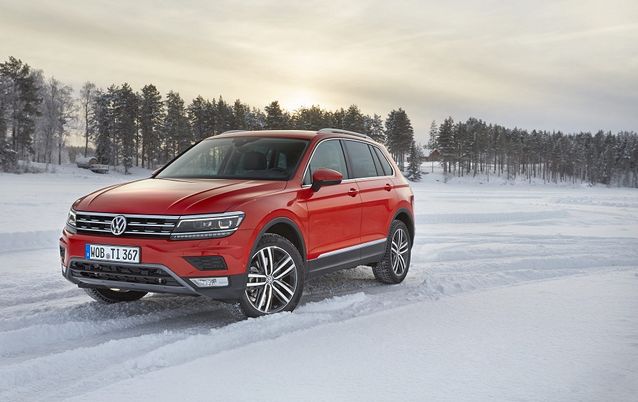
The second generation Tiguan gets a sharper, sportier and more upmarket look. Picture: VOLKSWAGEN AG
-
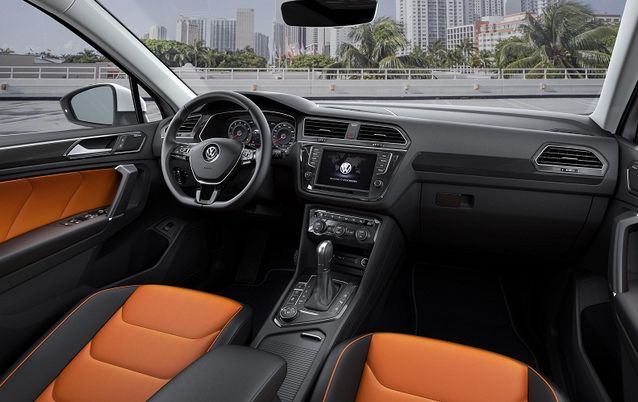
The low rent plastics have been hidden away to give the dash a more premium feel. Picture: VOLKSWAGEN AG
-
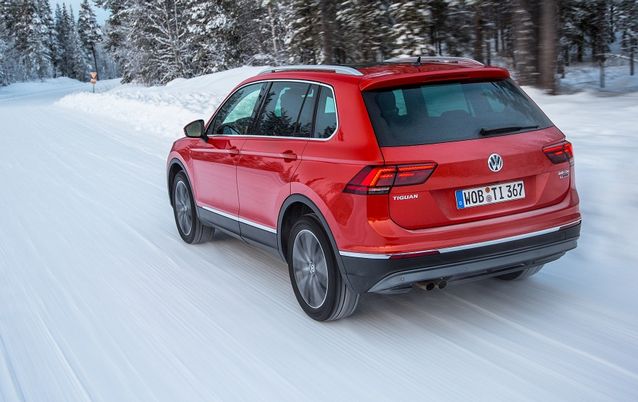
Ice driving with the Tiguan actually showed up some superb qualities in the car. Picture: VOLKSWAGEN AG
-
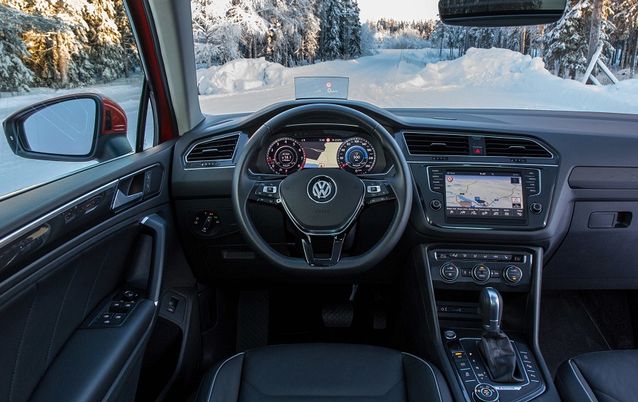
The new Tiguan gets a great Active Info Display and a not so great head-up display. Picture: VOLKSWAGEN AG
ICE driving is a thing car makers do when they want us to concentrate our opinions on everything except the way a car handles or even accelerates. The tyres usually sprout spikes or studs, rendering any analysis of the below-deck doings fairly pointless. The engines could wheeze out 30kW and find it more than adequate.
Usually, we’re limited to writing about engine noise, interior space and quality, whether or not anything fell off and how many dog-sled teams we found (one, incidentally).
Different this time, though. Volkswagen (VW) didn’t bother with studs, leaving its second-generation Tiguans, due in SA at the end of the third quarter of 2016, replete with a 235/50 R19 set of the wonderfully named ContiVikingContact winter tyres. They won’t exactly replicate the steering feel or the handling finesse of a set of standard boots, but they’re a lot closer than a set of metal porcupines.
VW officially says it has us in Arvidsjaur, Sweden to sample its new 4Motion Active Control system, which lets you scroll through snow, normal, off-road and properly off-road setups, but it goes deeper than that. The normal mode has a subset of options, from eco through to sport and customisable individual mode, so that takes the possibilities out to nine.
The company unofficially has us here because the Tiguan 2 is the first all-new model it has launched since the Dieselgate scandal spiralled so haughtily out of control and it would quite like to be known for making cars again. It will be the most important car the firm launches this year, even allowing for the bigger-selling Polo (as the Tiguan’s seven-seat derivative is at the core of VW’s latest attempt to make an impression in the US).
The new model shares almost nothing with the predecessor that sold 2.6-million models, but was caught in a no-man’s land in countries such as America. Its interior size left it too small for markets accustomed to bigger machinery at the price, but was too big to let VW squeeze in another model between the Tiguan and the Touareg.
That’s changed. Completely. It’s a far bigger car inside and out, with another 60mm of wheelbase length, all dedicated to interior room, then another 30mm of width. It’s also 22mm lower in the roof height, but counterintuitively, it carries more ride height (200mm, or 180mm at the differentials) than before. And it’s 50kg lighter.
The first SUV-crossover to be built off VW’s MQB architecture, the Tiguan is heavily focused on all-wheel drive, though it offers six-speed manual versions of its 1.4l petrol four-cylinder (92kW) and base 1.6 TDI (85kW) as front-wheel drives.
Everything else will be all-wheel drive, with a familiar 110kW version of the 2.0l TSI motor and two versions of the 2.0l engine (132kW and 162kW) fleshing out the petrol-powered options. The strongest two engines are turbocharged, with direct fuel injection and variable valve timing and the all-wheel drive models all use seven-speed dual-clutch transmissions. They’re not all the same, with the bigger engines getting a stronger unit, rated for more torque.
It’s a bit the same over on the (whisper it) diesel side of the garage, where the five-strong array of turbocharged, direct-injection engines is highlighted by two 110kW versions of the four-cylinder engine.
That’s explained by VW giving countries the option of one or the other. Tow a lot and the country gets the DQ500 seven-speed dual-clutch transmission, rated to 500Nm and able to tow 2,500kg. Tow a little and the engine offers less torque and gets the lighter-grade DQ250 DSG.
Otherwise there will be a 140kW version of the 2.0l and a biturbo 176kW unit, though the stronger engine is going to be a later arrival, because it wasn’t originally in the game plan for the Tiguan and only got shoved into it after former CEO Martin Winterkorn drove it in a Passat prototype and unsubtly demanded to know why not.
As always, SA has yet to learn which models and engine choices it will be getting as well as which towing option.
The powertrains are one thing, but the switch to MQB beneath the skin has brought an unavoidably noticeable growth spurt. The car gives you the choice of rear seat or luggage as a priority. In its standard form it has a useful 615l (up 145l), and can grow as the rear seats slide forward up to 170mm. They also slide (and fold) independently, with a 60:40 split that allows a baby seat to stay in place while the larger side folds flat.
The rear seats are flat looking, but usefully comfortable for adults, though the look of the plastics is noticeably cheaper in the rear than it is in the front and the optional fold-down table has an un-VW clunky feel to it.
If you’ve seen a Passat’s interior, you’ll be familiar with most of what goes on in the Tiguan, and that’s a good thing. The instrument panel has no analogue parts at all and is instead the stunning, fully digital TFT Active Info Display with seven different display options.
On top of that, quite literally, is a head-up display. The glass unit rises from the instrument cluster and though the display area can be adjusted to suit the driver’s eye line, it never feels integrated and can be an annoyance in the peripheral vision rather than an intuitive aid.
The seats are terrific, though, and so is the dash. VW follows its recent traditions by putting the Tiguan’s most prestigious bits and pieces high on the dash, while the cheaper, harder plastics lurk down low, where they’re rarely seen or touched.
We tested the 2.0l TSI petrol motor, with 110kW of power, then had a stint in the 110kW turbodiesel, too, with its 340Nm of torque between 1,500 and 3,950r/min. The company calls it a TDI SCR, to make a point that it’s a bit more advanced than those diesel engines.
Both engines are incredibly well isolated from the interior. You can hear them, however you rarely feel anything negative coming from up front, which is especially impressive in the diesel.
The petrol is really all anybody needs, because it’s cleaner (a bit of a point lately) and you’d have to drive about 30,000km a year for four years to get a payback on the diesel version. It gets to 100km/h in 7.7 seconds, speeds beyond 200km/h and is smooth and calm.
The sound deadening is as impressive as the vibration damping. The wind noise levels are incredibly low and so is the insulation from bump thump. You might not expect much of that on snow, but the broken snow and ice edges on tarmac roads neatly replicate square-edged expansion joints.
You can feel the suspension moving to meander over road issues without bothering you, largely, about all but the worst of them.
It helps that the stock 17-inch rubber runs high (50 profile) tyres, but even the biggest 20-inch options are still quite tall.
The car hides its ride height with a flat cornering stance and a beautifully cosseting way of easing across hard country. The feeling of composure is helped by the brilliance of its electronic systems, which have a snow mode that barely lets the car slide and provides an astonishing amount of security. It doesn’t have a fixed drive distribution setting (say, 60% to the rear axle) because it’s constantly changing depending on the conditions, pushing drive around in the latest version of the Haldex all-wheel drive concept.
Maybe it’s not fun for those who prefer their sliding and skidding, but for the millions of people who bought Tiguans to tote their families, it’s exactly what they wanted. Besides, you can always push it across to its sport mode if that’s what you want.
We are not going to lock in a score until we drive it on a more consistent surface, but on the face of it, the Tiguan will be a winner for Volkswagen.
It’s hard to see how it can be anything but.



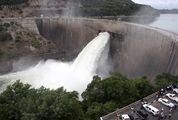





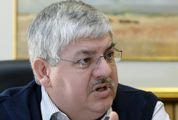













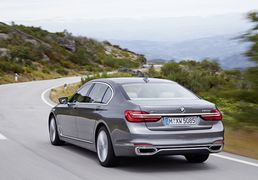

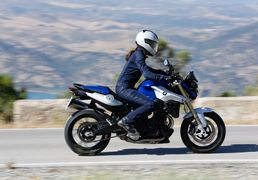
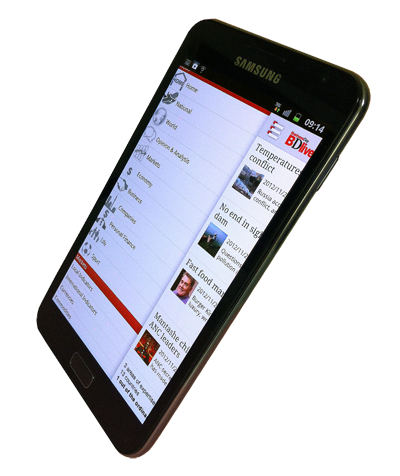




Change: -1.84%
Change: -2.22%
Change: -3.22%
Change: -2.18%
Change: -0.22%
Data supplied by Profile Data
Change: -0.36%
Change: -0.13%
Change: -1.84%
Change: 0.00%
Change: 0.00%
Data supplied by Profile Data
Change: -0.11%
Change: 0.08%
Change: 0.13%
Change: 0.44%
Change: -0.11%
Data supplied by Profile Data
Change: -0.02%
Change: -0.11%
Change: -0.39%
Change: -0.80%
Change: -2.32%
Data supplied by Profile Data